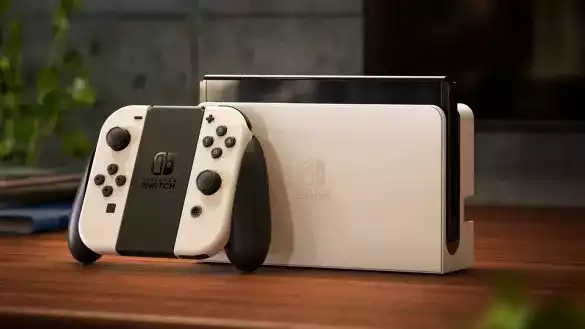The Nintendo Switch OLED is coming soon. This refreshed version of the Nintendo Switch console brings a number of welcome upgrades to the hugely popular home console/portable gaming hybrid.
While not quite the Nintendo Switch Pro we've come to expect, a larger OLED display, a widely adjustable stand, a new dock with Ethernet port, additional internal storage, enhanced speakers, and various other useful upgrades will be brought to the market. While not a groundbreaking refresh, it is a solid evolution of the already very good original Nintendo Switch.
If you do not currently own a Nintendo Switch and are looking to purchase a Nintendo Switch, you will almost certainly want to purchase the OLED model. However, many Nintendo Switch owners will be wondering whether to upgrade from the launch model. [For an investment of only $50, you can get many of the key features of the OLED Switch. Here's how.
The Nintendo Switch OLED announcement trailer made a big show of the new stand built into the console's latest model. This is because the original Switch's tiny kickstand was rather lackluster and functionally useless in many situations, such as turbulent flights.
The Switch OLED's stand is not only wide, but also adjustable, allowing the user to choose the perfect viewing angle when playing in tabletop mode. However, the exact same functionality is available with inexpensive accessories for the Nintendo Switch.
The Lamicall Adjustable Stand can be used for a variety of products, including tablets, smartphones, and of course, the Nintendo Switch. This third-party accessory provides all the features of the Switch OLED's new stand for your OG machine, and it's only $15.
For those serious about competitive multiplayer, it is ideal to play over a wired internet connection to reduce latency; the new dock that comes with the Nintendo Switch OLED includes an Ethernet port to facilitate this.
However, the same can easily be done with the original Nintendo Switch using a standard USB Ethernet adapter. Simply plug this accessory into the USB-A port on the first-generation dock, and you can play online via a wired connection. You can get the official adapter for around $30, but a third-party option will suffice, costing only $13.
This solution has the slight annoyance of a dong sticking out of the Switch dock, but it's better than spending hundreds of dollars on an entirely new Switch. Additionally, Nintendo has confirmed that the new Switch's OLED dock will be sold separately and will be compatible with the original console, which is another solution.
The original Nintendo Switch only has 32 GB of internal storage, while the Nintendo Switch OLED has twice that amount, 64 GB. This is a handy upgrade, especially considering that there are many Switch games that require more than 20 GB of installed space.
However, this upgrade is rendered almost meaningless by the microSD card slot under the original Switch's kickstand. You can get an officially licensed 128GB card for about $20, giving you plenty of extra space to play.
If that's not enough, you can also get 256GB or 512GB cards, but these are more expensive and probably a bit overkill unless you have a huge library of Switch digital games.
Of course, the biggest upgrade to the Nintendo Switch OLED is in the name: the 7-inch OLED screen is a new feature that will be the centerpiece of the Switch's latest model.
Unfortunately, unless you're really good at making major modifications to your console yourself, you can only get this upgrade by shelling out $350 for a Nintendo Switch OLED.
While a larger screen is a good thing, there is an argument that the Nintendo Switch OLED does not have an increased resolution, so 720p games will actually look worse when enlarged compared to the standard Switch 6.2" LCD screen.
The Nintendo Switch OLED also has enhanced audio capabilities with an enhanced built-in speaker. This is a decent upgrade, but can easily be replicated with the best headphones currently available.
.









Comments